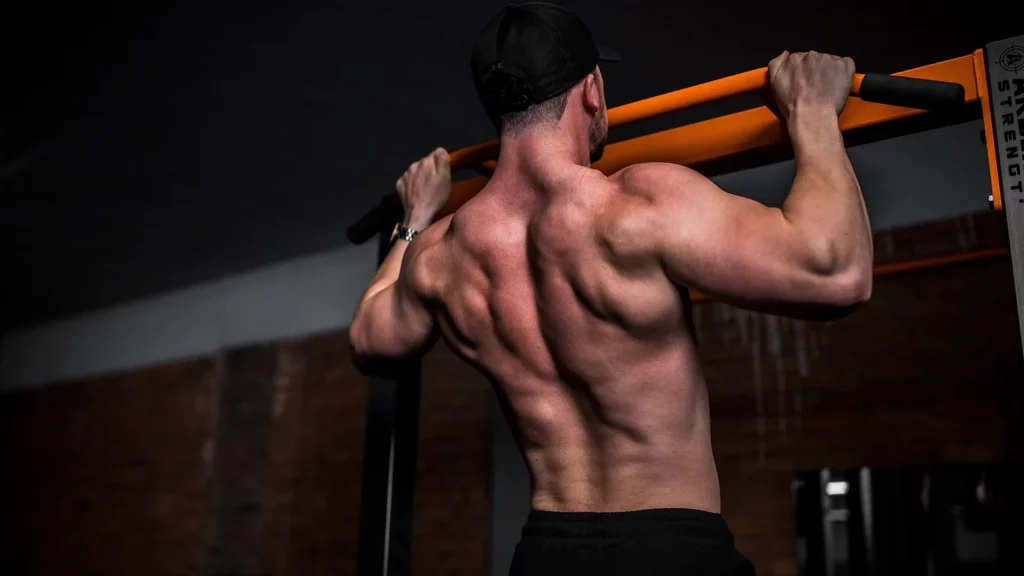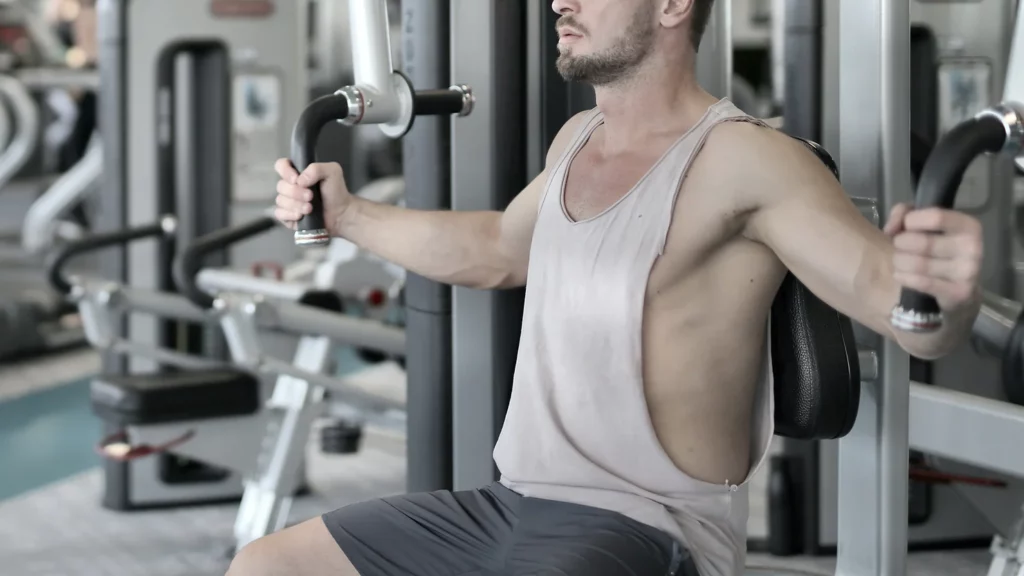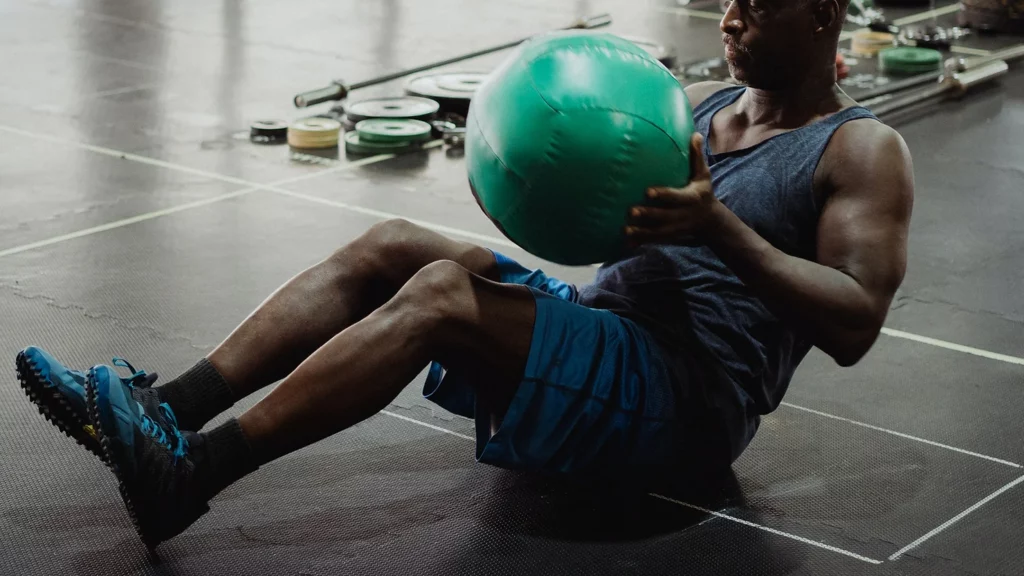When it comes to working the upper body, few exercises are as effective as dip station exercises. Not only do they heavily involve the chest, shoulders, back, and arm muscles, but they also place a moderate level of stress on the core muscles. If you’re looking to make serious gains in muscle mass – and don’t want to spend hours in the gym – then you need to be doing these exercises. In this article, we will describe how to perform each exercise correctly, so that you can maximize your results. We’ll also highlight some of the most common mistakes people make when doing dip station exercises.
What is a dip station?
A dip station is a piece of weight training equipment that consists of two uprights with handles and a platform to place your feet on. Dip stations can be freestanding or they can be attached to a weight bench. They can be found in most gyms, and they are relatively inexpensive to purchase for home use.
What are the benefits of a dip station?
There are many benefits to using a dip station. First, they allow you to work multiple muscle groups at the same time. Most of the movements that one can do on a dip station target the chest, shoulders, and triceps. However, they are a multitude of exercises you can do to target the entire upper body. This makes dip station exercises an excellent choice for those looking to build muscle mass. Second, they are relatively simple exercises to perform and don’t require a lot of coordination. Third, bodyweight exercises can be performed with little to no equipment, making them ideal for those on a budget. Another benefit is that they are relatively safe exercises to perform. When done correctly, the risk of injury is low. Finally, they are very versatile – there are many different dip station exercises that you can perform.
The 7 Best Dip Station Exercises for Building Muscle
Here are the seven best dip station exercises for building muscle:
Exercise #1: Chest Dips
Chest dips are the first exercise on our list. To target the chest lean forward as you lower your body down. Weight can be added in the form of a dumbbell placed between your feet or a weighted belt.
To perform this exercise:
-
Position yourself on the dip station with your palms gripping the handles.
-
Extend your legs out in front of you and cross them at the ankles.
-
Lower your body down until your elbows are at a 90-degree angle.
-
Be sure to keep your core engaged throughout the exercise.
-
Use your chest muscles to push your body back up to the starting position.
-
Repeat for the desired number of repetitions.
Common Mistakes
One of the most common mistakes people make when performing chest dips is to flare their elbows out to the sides. This puts unnecessary stress on the shoulder joint and increases your risk of injury. Another mistake is to round your back as you lower your body down. This can also lead to injury. Be sure to keep your elbows close to your body and your back straight throughout the exercise.
Exercise #2: Triceps Dips
Triceps dips are the second exercise on our list. To engage the triceps keep your body more upright throughout the exercise. Weight can be added in the form of a dumbbell placed between your feet or a weighted belt.
To perform this exercise:
-
Position yourself on the dip station with your palms gripping the handles and your feet crossed behind you.
-
Lower your body down until your elbows are at a 90-degree angle.
-
Be sure to keep your core engaged throughout the exercise.
-
Use your triceps muscles to push your body back up to the starting position.
-
Repeat for the desired number of repetitions.
Common Mistakes
When performing triceps dips, it is important to avoid slouching. This can lead to lower back pain. Another mistake is to swing your body as you dip down. This uses momentum instead of muscle power and makes the exercise less effective. Be sure to keep your body still and use your triceps to lower and raise your body.
Exercise #3: Pull-Ups
The third exercise is the pull-up. This movement focuses on the back muscles. Add weight to this drill by placing a dumbbell between your feet or wearing a weight belt.
To perform this exercise:
-
Position yourself on the dip station with your palms gripping the handles in an overhand grip and your feet crossed behind you.
-
Pull your body up until your chin is over the bar.
-
Be sure to keep your core engaged throughout the exercise.
-
Use your back muscles to lower your body back down to the starting position.
-
Repeat for the desired number of repetitions.
Common Mistakes
One mistake people often make when performing pull-ups is to use too much momentum. This takes the focus off of the back and biceps muscles and makes the exercise less effective. Another mistake is to let your body swing from side to side. This puts unnecessary stress on the shoulders and increases your risk of injury. Be sure to keep your body still and use your muscles to control the movement.
Exercise #4: Chin-Ups
The fourth exercise on our list is the chin-up. This activity targets the biceps muscle group. To make it more challenging, raise the intensity by adding a dumbbell between your feet or wearing a weight belt.
To perform this exercise:
-
Position yourself on the dip station with your palms gripping the handles in an underhand grip and your feet crossed behind you.
-
Pull your body up until your chin is over the bar.
-
Be sure to keep your core engaged throughout the exercise.
-
Use your biceps muscles to lower your body back down to the starting position.
-
Repeat for the desired number of repetitions.
Common Mistakes
One mistake people often make when performing chin-ups is kipping. This means using momentum to pull your body up instead of using your biceps muscles. Kipping takes the focus off of the biceps and can lead to injury. Another mistake moving too fast. This also takes the focus off of the biceps and increases your risk of injury. Be sure to move slowly and controlled throughout the exercise.
Exercise#5: Knee Raises
Next up is knee raises. They target the abdominal muscles. To make this activity more difficult, add a dumbbell between your feet or ankle weights.
To perform this exercise:
-
Position yourself on the dip station with your palms gripping the handles and your feet crossed behind you.
-
Raise your knees up towards your chest.
-
Be sure to keep your core engaged throughout the exercise.
-
Use your abdominal muscles to lower your legs back down to the starting position.
-
Repeat for the desired number of repetitions.
Common Mistakes
One mistake people often make when performing knee raises is to swing their legs. This takes the focus off of the abdominal muscles and makes the exercise less effective. Another mistake is to let your body rock from side to side. This puts unnecessary stress on the lower back and increases your risk of injury. Be sure to keep your body still and use your muscles to control the movement.
Exercise #6: Hanging Leg Raises
The sixth exercise on our list is the hanging leg raise. This movement targets the lower abdominal muscles. To make it more challenging, add a dumbbell between your feet or ankle weights.
To perform this exercise:
-
Position yourself on the dip station with your palms gripping the handles and your feet crossed behind you.
-
Raise your legs up towards your chest.
-
Be sure to keep your core engaged throughout the exercise.
-
Use your lower abdominal muscles to lower your legs back down to the starting position.
-
Repeat for the desired number of repetitions.
Common Mistakes
To prevent making errors, do the activity slowly and carefully. One frequent error that people make when doing hanging leg raises is to swing their legs. This diverts attention away from the lower abdominal muscles, making the exercise less effective. If this movement is too difficult you can perform knee raises instead.
Exercise #7: Handstand Push-Ups
The seventh exercise on our list is the handstand push-up. This activity targets the shoulders, triceps, and core muscles. This is an expert-level exercise, so only attempt it if you are confident in your ability.
To perform this exercise:
-
Position yourself in a handstand on the dip station rails with your feet straight above you.
-
Slowly lower your body down until your head is in between your hands.
-
Be sure to keep your core engaged throughout the exercise.
-
Use your shoulder and triceps muscles to push your body back up to the starting position.
-
Repeat for the desired number of repetitions.
Common Mistakes
One mistake people often make when performing handstand push-ups is to let their feet touch the ground. This takes the focus off of the shoulders and triceps and puts unnecessary stress on the lower back. Another mistake is not keeping your core engaged. This can lead to injury. Be sure to keep your core tight throughout the exercise.
Summary
In conclusion, these are the best dip station exercises for building muscle. Be sure to perform them slowly and controlled to avoid common mistakes. Add dumbbells or ankle weights to make the exercises more challenging. Adding dip station exercises to your workout routine is a great way to build muscle and strength.
Are you looking to get fit? Look no further! Our fitness programs are designed to help you build a strong and aesthetic physique. We also provide easy-to-follow routines that will fit any schedule. With our fitness programs, you'll have the tools you need to build muscle and achieve your fitness goals. Click the link below to get started!



